Nationality American Known for Artist Role Artist | Name Ben Laposky Spouse(s) Unmarried | |
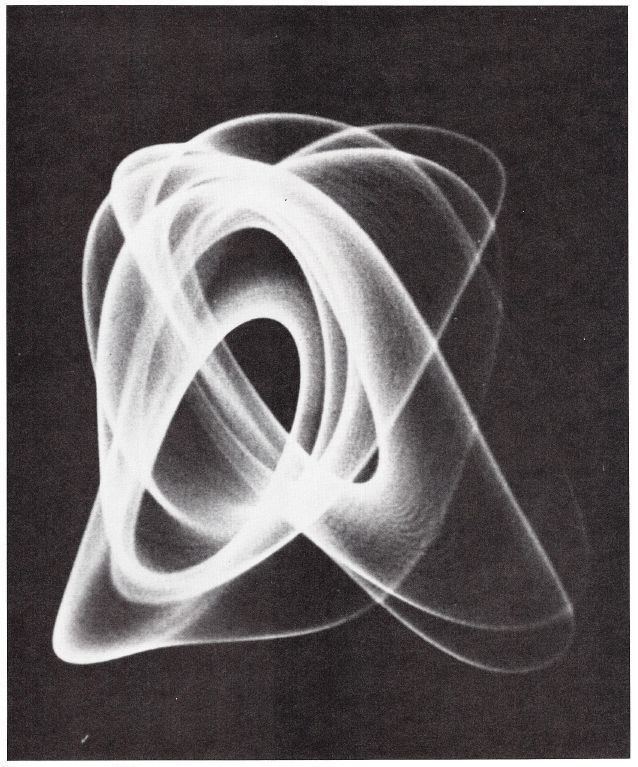 | ||
Full Name Benjamin Francis Laposky Notable work Electronic Abstractions Movement Modern art, Abstract art, Personal, Experimental Awards 1956 New York Art Directors Club gold medal for best editorial of the year (Fortune Magazine) Similar People | ||
Benjamin Francis Laposky (1914–2000) was a mathematician, artist and draftsman in Cherokee, Iowa. He has been credited with making the first computer graphics, utilizing an oscilloscope as the creation medium for abstract art. In 1953 he released what he called "Oscillons" (or oscillogram designs) along with a corresponding thesis entitled "Electronic Abstractions" via a gallery exhibition of fifty pictures of the same name at Sanford Museum in Cherokee. Laposky is often credited as the pioneer for electronic art, more specifically in the analog vector medium.
Contents
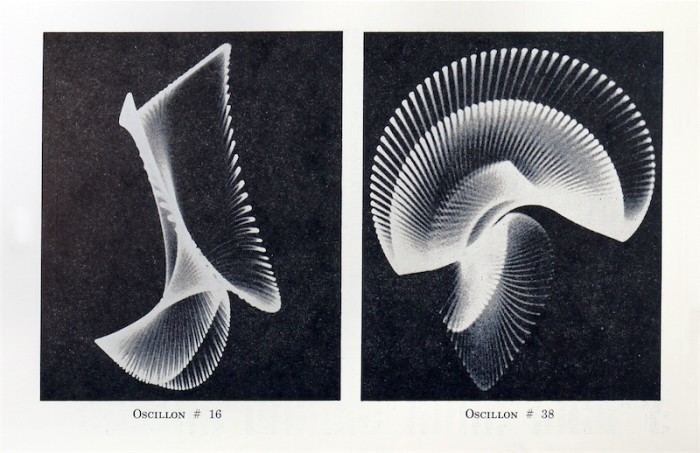
Life
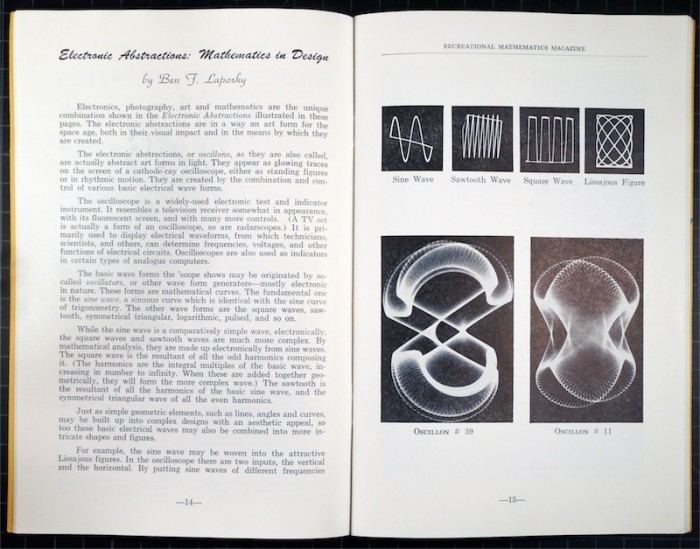
He was born September 30, 1914 on a farm south of Cherokee to Peter Paul and Leona Anastasia (Gabriel) Laopsky. His siblings were named George and Raymond. At age 4 his family relocated to Colorado Springs. In 1931 Laposky's mother died. In 1932 Laposky graduated from St. Mary's High school, Colorado Springs and shortly thereafter, the family relocated back to Cherokee where he began working as a sign painter and draftsman.
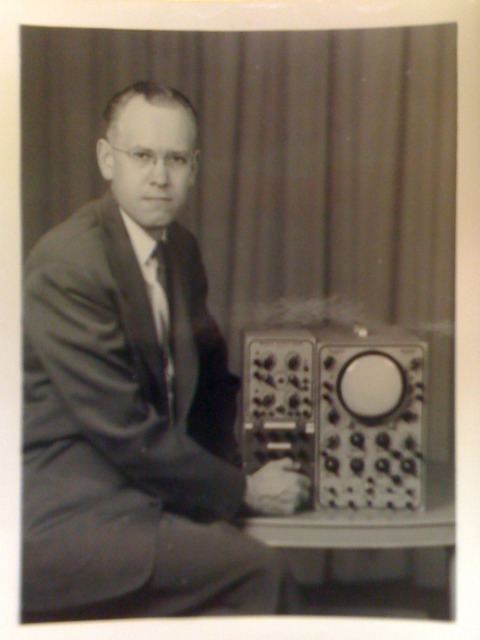
Laposky joined the US Army and was inducted into Fort Des Moines in 1942. He scored 134 in his army general classifications test, which put him up in the upper 5 percent of what the army classified as "the ability to learn rapidly"; his mechanical aptitude test was 145. He was sent overseas with the 43rd Infantry division headquarters general staff section (G-3) assigned as a map draftsman (T-4).
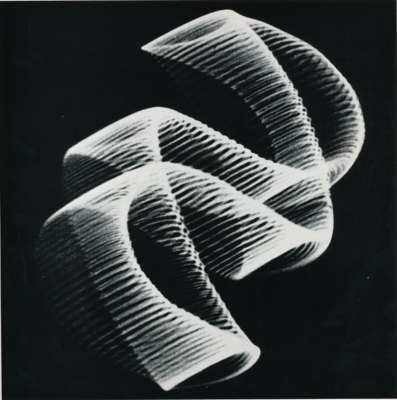
As a technical sergeant, he was wounded in the right foot during a Japanese bombing raid at Rendona Island, Solomon Islands, (New Georgia Munda airfield campaign) in July 1943 (for which he received the Purple Heart). He spent 10 months in army hospitals in New Zealand and Alabama. He was discharged with disability in May 1944 after 2 years of service, returning to his home in Cherokee, Iowa.
Laposky returned to his original work, but was no longer able to climb ladders as is required by a sign painter, so he focused on lettering smaller cards and draftsman and student of mathematics, providing many Magic Number Squares to the Ripley's Believe it or Not! syndicated newspaper feature. He owned a sign shop in Iowa and dabbled in art in his spare time. Envisioning "painting with light". He took extension courses in elementary drafting from the University of Chicago.
Electronic Abstractions
In 1946 Laposky began working with photographic pendulum tracings and harmonograph machine patterns.
In 1947 he read an article in Popular Science which proposed the use of television testing equipment, such as oscilloscopes, to generate simple decorative patterns, based on in formula similar to that which governs pendulum curves. This stoked his imagination and he began to investigate the proposal.
In 1950 Laposky used a cathode ray oscilloscope with sine wave generators and various other electrical and electronic circuits to create abstract art, so called by the artist, "electrical compositions". These electrical vibrations shown on the screen of the oscilloscope were then recorded using still photography. In later work he also incorporated motorized rotating filters of variable speed to color the patterns.
Scripta Mathematica published the first Oscillon photographs in 1952. Laposky's work was featured in over 250 books, magazines, newspapers, advertising art work worldwide. An art portfolio in Fortune magazine in 1956 won a New York Art Directors Club gold medal for best editorial of the year.
Laposky was interested in showing the designs or patterns based on natural forms, curves due to physical forces, or curves based on mathematical principles, such as various waveforms (sine-waves, square waves and Lissajous figures). According to the exhibit documentation, Laposky pointed out a parallel between his oscillons and music, the operator of an electronic setup playing a sort of "visual music".
In 1952 Laposky displayed his work in a one-man show entitled "Electronic Abstractions" at Sanford Museum in Cherokee, Iowa. As a traveling exhibit, "Electronic Abstractions" was shown across the United States and in France at LeMons and other places by the Cultural Relations Section of the United States from 1952 to 1961.
In total, Laposky's art was published more than 160 times and displayed at more than 200 exhibitions before the emergence of computer graphics upstaged him in the mid 1960s.
Laposky cited and admired Naum Gabo, Joan Miró, Piet Mondrian, Victor Vasarely, Kazimir Malevich, Fernand Léger, Marcel Duchamp, Alexander Calder and some of the Synchromism and Futurism artists.
Some praise of the Oscillon work by Laposky: "The Oscillons are among the most sensually and spiritually exhilarating images of the entire history of human vision,". "The rhythm and balance in each piece reflect not only the artist’s vision but the ordered principles underlying the physical world." Fred Camper, The Chicago Reader, August 2006
Magic Squares
From 1934 through August 1946, Ripley's Believe It or Not! had printed 77 of Laposky's Magic Square number problems. In total 117 of Laposky's geometric number arrangements ("magics") were printed in the Believe it of Not newspaper feature. Laposky's work on these number matrices lead to his election for membership in the Mathematical Association of America in 1950.
Laposky wrote about his magic square: "The crystallization in numbers of some small part of the beauty, harmony and rhythm or the universe.". It is likely that Laposky's early work in these Magic Squares and deeper introspection into their inner workings had profound influence on his latter work on Oscillons.
Legacy
Ben Laposky died in 2000 in Cherokee. His original one-man show of black and white Oscillons, along with 52 additional color images, is curated and controlled by the Sanford Museum. The museum's collection contains various commercial works and books in which Laposky was mentioned.
None of the 10,000 negatives he claimed to have taken have ever been found, and only 101 mounted images of the original set of 102 remain.
The original traveling show, along with some additional works, is maintained and periodically shown by the Sanford Museum and often travels to museums and universities internationally.
